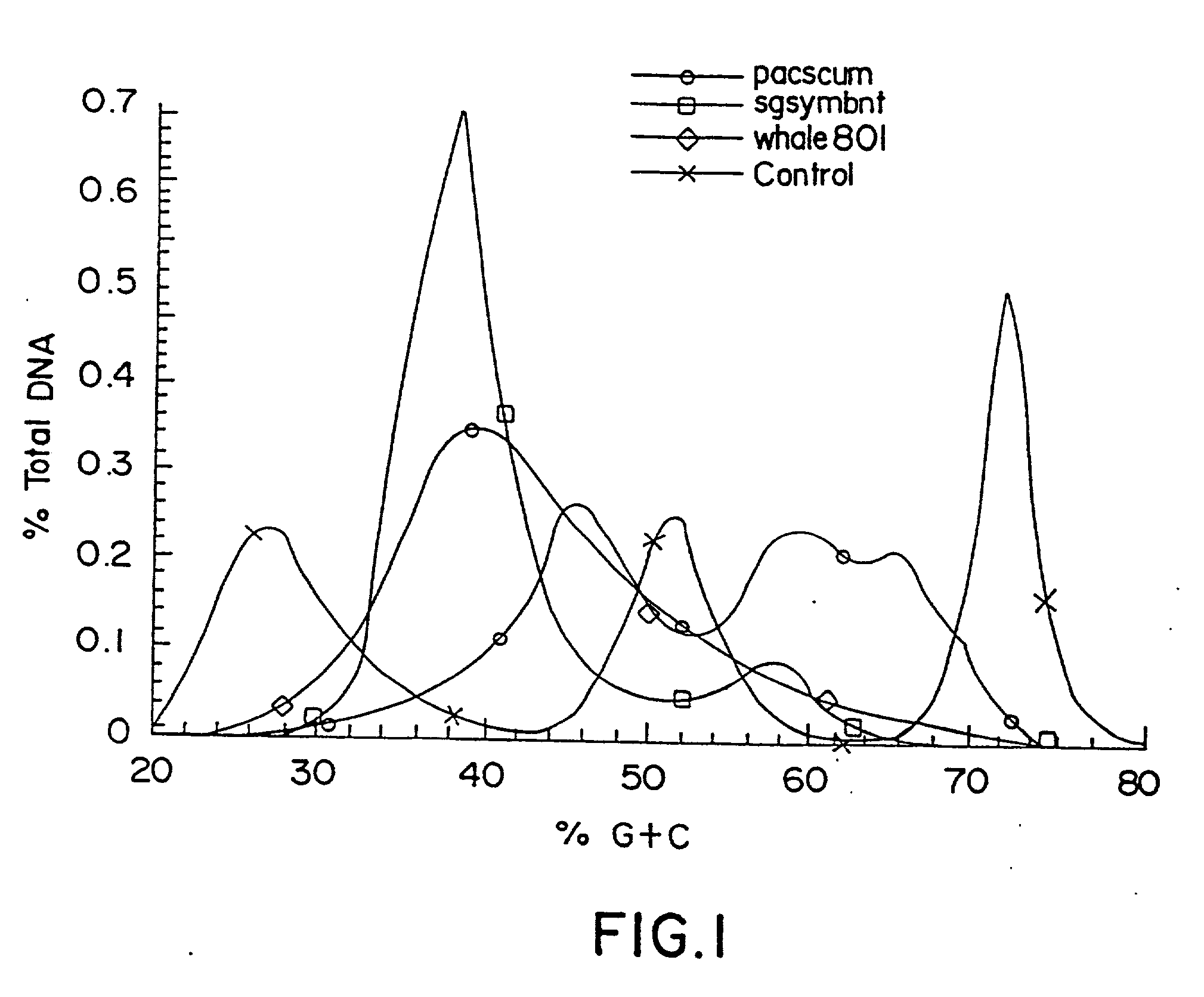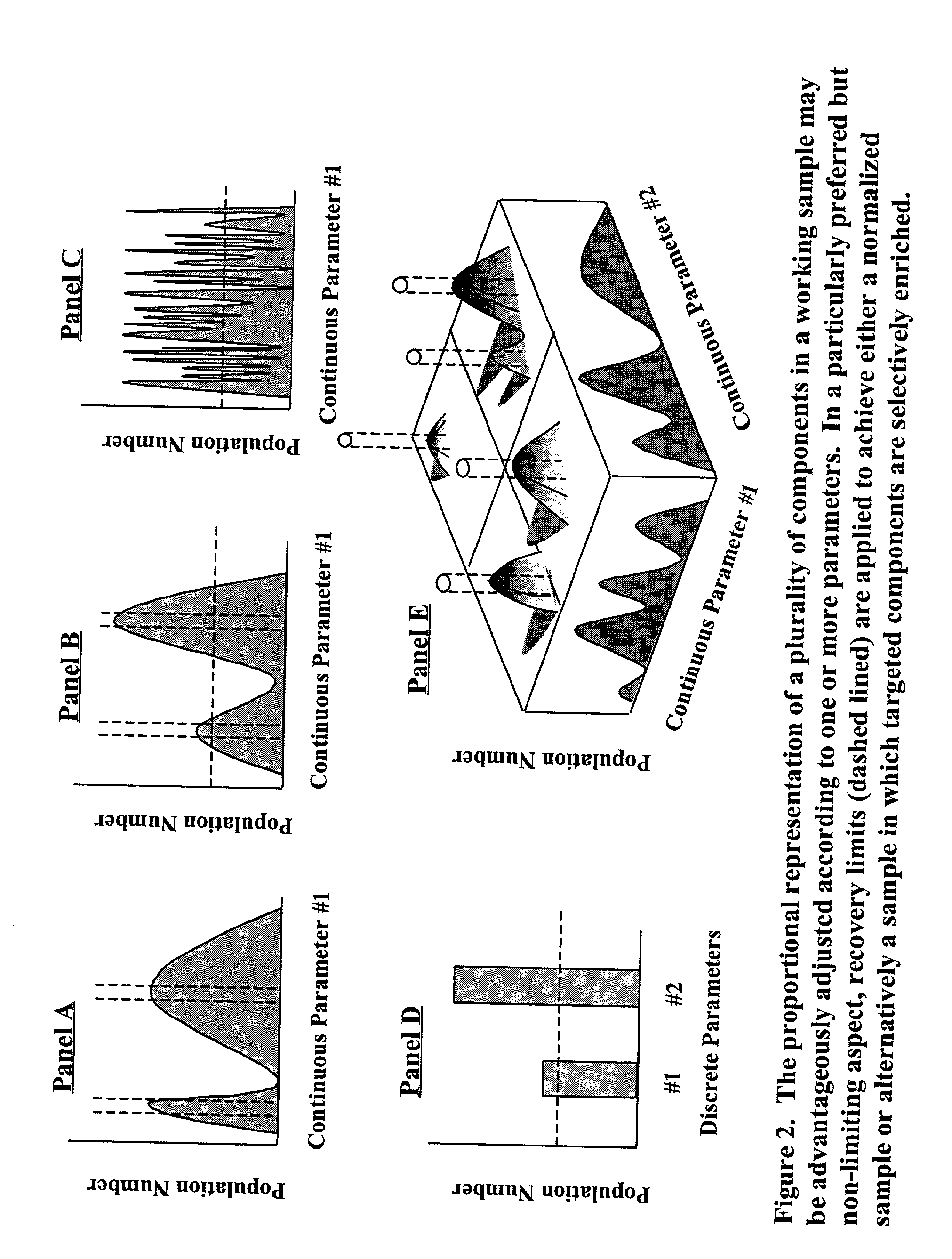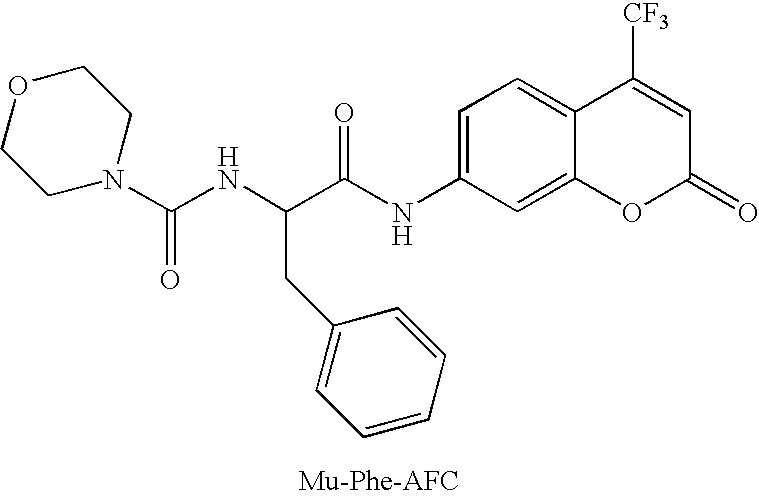Construction and use of catalogued nucleic acid libraries that contain advantageously adjusted representations of defined components
- Summary
- Abstract
- Description
- Claims
- Application Information
AI Technical Summary
Benefits of technology
Problems solved by technology
Method used
Image
Examples
example 1
Extraction and Cleaning of Organisms from Soil (for Subsequent DNA Extraction)
[0144] The extraction method of Example 1 is based upon published methods (Holben, 1994; Rickwood, 1982) and comprises novel modifications.
A) Reagents:
[0145] 1. Extraction buffer:
MgSO4 × 7H2O2.5gmNaCl1.25gmK2HPO42.5gmAscorbic acid0.2MH2O1.0L
[0146] 2. Acid-washed polyvinylpolypyrrolidone (PVPP): [0147] Add 300 gm of PVPP to 4 L of 3 M HCl, stir overnight. [0148] Filter suspension through several layers of cheesecloth (use large Buchner funnel). [0149] Wash with 4 L distilled H2O, 4 L of a 20 mM potassium phosphate buffer (pH 7.4). [0150] Repeat washes with phosphate buffer until pH is 7.0. [0151] Spread the PVPP on lab paper and let air dry overnight.
[0152] 3. Nycodenz-solution: [0153] 8 gm Nycodenz in 10 ml distilled H2O.
B) Procedure:
[0154] 1. Combine in a blender jar: [0155] 50 g soil [0156] 15 g acid-washed PVPP (polyvinylpolypyrollidon) [0157] 200 ml extraction buffer
[0158] 2. Homogenize for ...
example 2
Genomic DNA Isolation
[0170] 1.Samples are resuspended directly in the following buffer: [0171] 500 mM Tris-HCl, pH 8.0 [0172] 100 mM NaCl [0173] 1 mM sodium citrate [0174] 100 g / ml polyadenosine [0175] 5 mg / ml lysozyme
[0176] 2. Incubate at 37 C for 1 hour with occasional agitation.
[0177] 3. Digest with 2 mg / ml Proteinase K enzyme (Boehringer Mannheim) at 37 C for 30 min.
[0178] 4. Add 8 ml of lysis buffer [200 mM Tris-HCl, pH 8.0 / 100 mM NaCl / 4% (wt / vol) SDS / 10% (wt / vol) 4-aminosalicylate] and mix gently by inversion.
[0179] 5. Perform three cycles of freezing in a dry ice-ethanol bath and thawing in a 65 C water bath to release nucleic acids.
[0180] 6. Extract the mixture with phenol and then phenol / chloroform / isoamyl alcohol.
[0181] 7. Add 4 grams of acid-washed polyvinylpolypyrrolidone (PVPP) to the aqueous phase and incubate 30 minutes at 37 C to remove organic contamination.
[0182] 8. Pellet PVPP and filter the supernatant through a 0.45 m membrane to remove residual PVPP.
[0...
example 3
CsCl-Bisbenzimide Gradients
Gradient visualization by UV:
[0187] Visualize gradient by using the UV handlamp in the dark room and mark bandings of the standard which will show the upper and lower limit of GC-contents.
Harvesting of the Gradients:
[0188] 1. Connect Pharmacia-pump LKB P1 with fraction collector (BIO-RAD model 2128).
[0189] 2. Set program: rack 3, 5 drops (about 100 μl), all samples.
[0190] 3. Use 3 microtiter-dishes (Costar, 96 well cell culture cluster).
[0191] 4. Push yellow needle into bottom of the centrifuge tube.
[0192] 5. Start program and collect gradient. Don't collect first and last 1-2 ml depending on where your markers are.
[0193] 1. Follow microdialyzer instruction manual and use Spectra / Por CE Membrane MWCO 25,000 (wash membrane with ddH2O before usage).
[0194] 2. Transfer samples from the microtiterdish into microdialyzer (Spectra / Por, MicroDialyzer) with multipipette. (Fill dialyzer completely with TE, get rid of any air bubble, transfer sa...
PUM
| Property | Measurement | Unit |
|---|---|---|
| Electric charge | aaaaa | aaaaa |
| Digital information | aaaaa | aaaaa |
| Biological properties | aaaaa | aaaaa |
Abstract
Description
Claims
Application Information
 Login to View More
Login to View More - R&D
- Intellectual Property
- Life Sciences
- Materials
- Tech Scout
- Unparalleled Data Quality
- Higher Quality Content
- 60% Fewer Hallucinations
Browse by: Latest US Patents, China's latest patents, Technical Efficacy Thesaurus, Application Domain, Technology Topic, Popular Technical Reports.
© 2025 PatSnap. All rights reserved.Legal|Privacy policy|Modern Slavery Act Transparency Statement|Sitemap|About US| Contact US: help@patsnap.com



